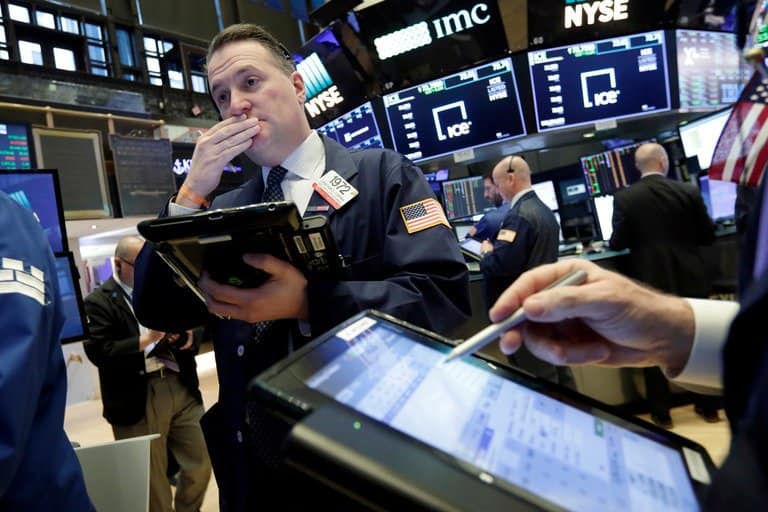
Investors were anticipating a more volatile 2018, but few expected the severity and frequency of the swings seen on Wall Street this year.
Markets have not seen moves this wild since the financial crisis, according to LPL Financial’s Ryan Detrick.
The volatility continued early Wednesday, with stock futures sinking after President Donald Trump taunted Russia by hinting at a missile strike in Syria in response to Damascus’ alleged chemical weapons attack on a town.
The S&P 500 has moved by at least 1 percent around 40 percent of the time so far this year. When annualized, that rate translates to the most moves of that degree since 2009.
Threats of a trade war and a takedown in tech stocks have made for a particularly rocky run over the previous 13 trading sessions. During that stretch, the S&P 500 moved by at least 2 percent nearly half the time.
The S&P 500 has not seen a 13-day run so volatile since China devalued its yuan in August 2015. Markets then took nearly six months to find a bottom.
This is not a repeat of 2015, though, says Detrick. He does not anticipate markets to take nearly as long to find a bottom as they did more than two years ago.
“We have expanding earnings. We were in the midst of an earnings recession back in the middle of 2015. Now we have earnings that are going to be up about 20 percent in the first quarter,” said Detrick. “The global economy is still really strong and it’s being led by earnings. That’s one major difference between now and 2015.”
However, in the near term, Detrick says to expect the S&P 500 to be at these levels. Recent market declines have taken the S&P 500 down to its 200-day moving average, a key support level, causing some concern to investors. The benchmark index was 2 percent above that marker as of Tuesday’s close.
“We’re right on the 200-day moving average. We sat above that for almost a year. We kind of broke it and now we’re still sitting right there, right around flat for the year,” he said. “We could continue to chop around this 200-day moving average.”
Historical moves and the fundamentals picture do support a higher breakout for the stock market after a period at these lows, says Detrick. April has historically been one of the stronger months and has risen in nine of the past 10 years.
“We don’t anticipate at all a bear market. We think these dips could be buying opportunities led by small caps and value,” he added. “Those are the two areas we liked at the start of this year. We continue to think those are two areas that will lead us this year as this overall equity bull market continues.”
The S&P 500 is around 0.6 percent lower for the year, putting it on track for its second worst performance of the past decade. The index is down 7.5 percent from its 52-week high set in late January.
